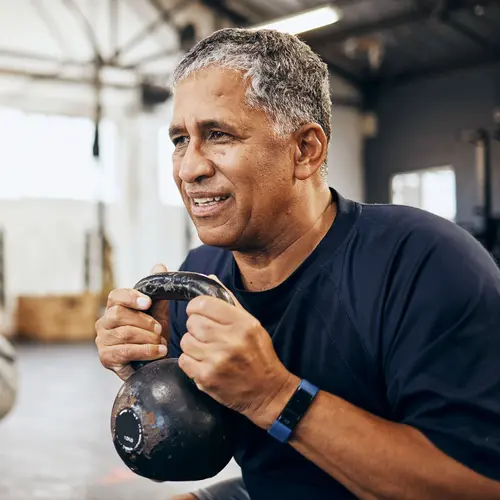You’ve probably seen a co-worker catch up on emails at the office’s treadmill desk, while another knocks out reports at their standing desk. But did you know they’re lowering their risk for heart disease, obesity, and back and neck pain, too?
Studies have linked sitting a lot to these and other health problems. Even people who exercise most days face health risks if they sit too much. Standing desks raise your computer high enough for you to work and stand at the same time. This keeps you on your feet for more of the day.
Types of Standing Desks
All standing desks follow the same basic idea -- they let you work while you stand.
Fixed-height desks stay at your standing height. Sit-stand desks go up and down so you can sit or stand whenever you feel like it. Power sit-stand desks go up with the push of a button. You can lift manual ones with a handle or raise them with a lever or crank.
You can buy a standing desk online or at an office supply, electronics, or big-box store.
A basic fixed-height desk will cost you less than $100, but a really nice electric desk can cost more than $1,000. Treadmill desks take the idea a step further by letting you walk while you work, but they can cost more than $1,000, too.
The Pros
Besides less sitting time, standing at work has other benefits:
More calories burned: One study showed that standing sheds 88 calories an hour, compared to 80 calories for sitting. Walking burns a lot more -- 210 calories an hour.
Less back pain: Sitting for long periods of time tightens your muscles and can hurt your lower back, especially if you have bad posture. Standing desks seem to help ease back pain, but doctors don't know how much time you need to stand to get this benefit.
More productive: In a study of call center employees, those with standing desks were 45% more productive on a daily basis than employees who sat during their shift.
The Cons
Standing desks aren't perfect. They can cause a few problems:
Leg and foot pain: Standing for long periods of time puts pressure on your knees, hips, and feet. This could lead to pain. If you lift one foot to ease the pressure, being off-balance could affect your posture.
Vein problems: Being on your feet for too long makes blood collect in your leg veins. The vein may stretch to fit the extra blood and get weaker. This leads to varicose veins. People who stand for more than 6 hours a day are two or three times more likely to need surgery for varicose veins than people who stand or walk for less than 4 hours a day.
Standing doesn't replace exercise: You'll only burn a few more calories standing, which is better than nothing. But walking more than doubles your calorie burn. Studies that compared the two showed treadmill desk users had much greater improvements in blood sugar and cholesterol levels than standing desk users.
Standing desks aren't ideal for every task: You may be able to type or answer the phone while on your feet, but some tasks, like drawing and writing, are easier when you sit.
The Right Way to Stand
Experts say the best way to use a standing desk is to stand for a while, sit, then stand again. Do this several times throughout the day. To start, stand for just 30 minutes at a time, a few times a day. Add an hour, then add 2 or more hours as you feel comfortable.
Move the standing desk so your body is properly aligned. Your head, neck, and spine should be in a straight line when you stand. And your elbows should form a 90-degree angle when your wrists are flat on the desk. Put your computer monitor at eye level.
Wear comfortable shoes with no heel or a low one. Stand on a cushioned mat for more support.
Every 30 minutes or so, leave your desk and take a walk. Head to a co-worker's desk or grab a drink at the fountain to get some exercise and give your back a break. And even though you're standing more, don't forget to do at least 30 minutes of moderate-intensity exercise, 5 days a week.

